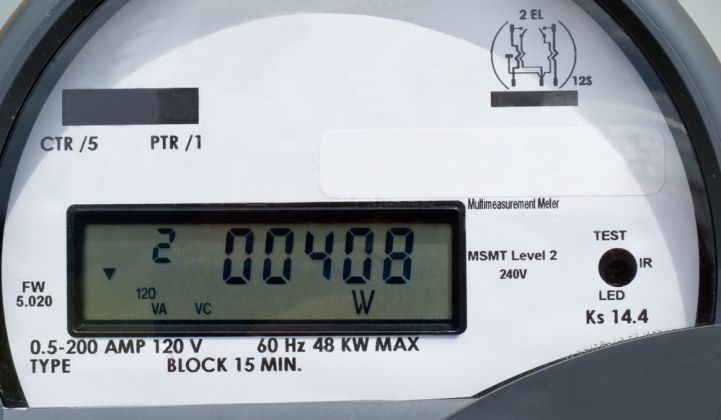As an "an independent growth platform" owned 60 percent by Toshiba, smart meter and grid networking player Landis+Gyr doesn’t have to report its financials in the same detail as do its public rivals like Itron and Silver Spring Networks.
But with Toshiba facing a financial crisis tied to cost overruns at its U.S. nuclear business -- and Landis+Gyr facing a writedown in value after two years of disappointingly slow growth -- the Swiss-based conglomerate decided to unveil some financial details to show it’s still a major player in the advanced metering infrastructure (AMI) field.
“The company, unaffected by Toshiba’s challenges," is expecting $1.64 billion in revenues for the fiscal year ending in March, Landis+Gyr wrote in a Wednesday announcement. That represents nearly 5 percent growth from $1.57 billion in 2015, and will come with year-on-year growth in operating profit and about $100 million in cash flow, it reported.
While the company didn’t release figures on its profit, CEO Andreas Umbach said in a statement that the company is a “profitable, fully independent operation,” with its own governance body, audit and risk committee and separate financial statements from Toshiba. It's held that status since it was acquired by the Japanese industrial, electronics and energy giant in 2011.
Those revenues aren’t as high as Itron’s $1.9 billion in 2015, but they’re close. And they dwarf those of competitor Silver Spring Networks, which just reported $311 million in 2016 revenues. Of course, Silver Spring doesn’t build its own meters, which reduces its revenues (but also its costs per meter deployed). In some cases, Silver Spring’s network interface cards are embedded in Landis+Gyr meters.
Competing meter makers include Germany’s Elster, which was bought by Honeywell for $5 billion in 2015, and U.S.-based Sensus, which was bought by water treatment company Xylem for $1.7 billion last year.
Landis+Gyr has distinguished itself over the past few years by winning a majority of the mega-contracts for smart meters, including 27 million meters with Tokyo Electric Power and 16 million meters for British Gas. This kind of volume shows up in its projected backlog of $2.4 billion for the fiscal year -- more than Silver Spring’s backlog of $1.165 billion for 2016, and Itron’s backlog of $1.5 billion as of the third quarter of 2016.
Landis+Gyr has also provided Toshiba about $500 million to pay down debt added to the balance sheet as a part of the acquisition from private equity firm Bayard Group. That’s led to “a solid balance sheet,” the company reported, with an equity ratio of 65 percent at the end of last year, and net debt below $200 million, equivalent to “around one year’s EBITDA level."
Landis+Gyr’s release comes as Toshiba, which bought a 60-pecent stake in the company for $2.3 billion, is reportedly considering a writedown of the company’s goodwill value. According to Reuters, Landis+Gyr’s goodwill value was 143.2 billion yen ($1.3 billion) at the end of September, and Toshiba is considering a further writedown. Toshiba's latest earnings report, released in November, notes that Landis+Gyr saw lower sales and lower operating income for the first six months of 2016, compared to the same period in 2015.
The recent history of Landis+Gyr, founded in 1896 in Switzerland, has been complicated since the company entered the electronic meter business in the 1980s. It was owned by KKR and Siemens in the '90s, and sold to Australia’s Bayard Capital in 2004, where it spent $1.2 billion to acquire a series of networking providers, including Cellnet and Hunt, which make up a good share of its legacy business in cellular metering.
Over the past decade and a half, it has moved into mesh networking along with Itron, Silver Spring, Elster and others, and invested in the software to support smart meters, grid sensors and other IT-enabled devices. It also went on a shopping spree with Toshiba’s capital, buying meter data management software vendor Ecologic Analytics in 2012, demand response technology provider Consert in 2013, distribution grid modeling software vendor GRIDiant, and grid sensor maker PowerSense in 2014.
Umbach noted that Landis+Gyr continues to invest in research and development, with self-funded R&D investments expected to reach $160 million this year. It also keeps its accounting separate from Toshiba -- a fact it highlighted in July 2015, after Toshiba underwent an accounting scandal related to its overstatement of profits by nearly $2 billion.



